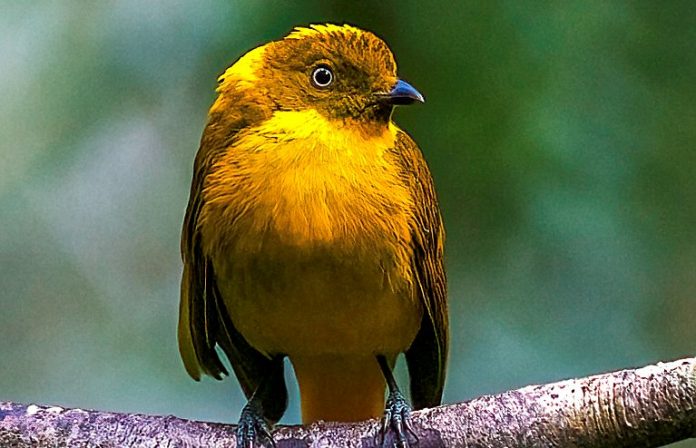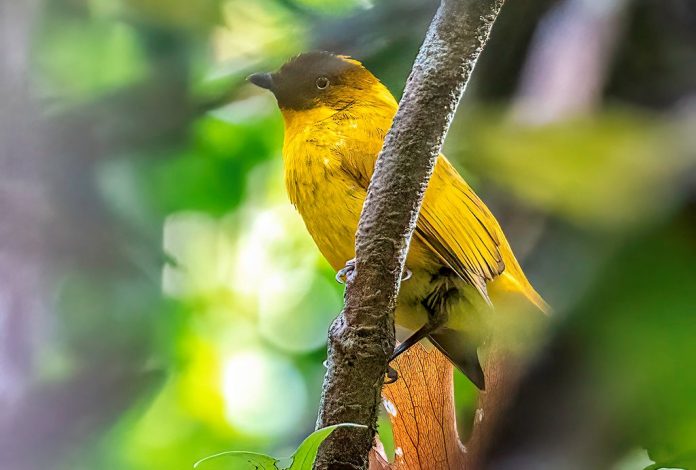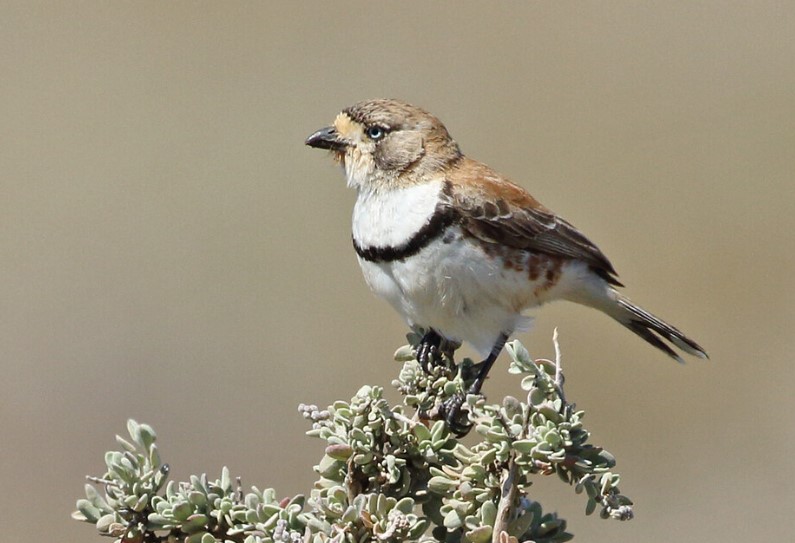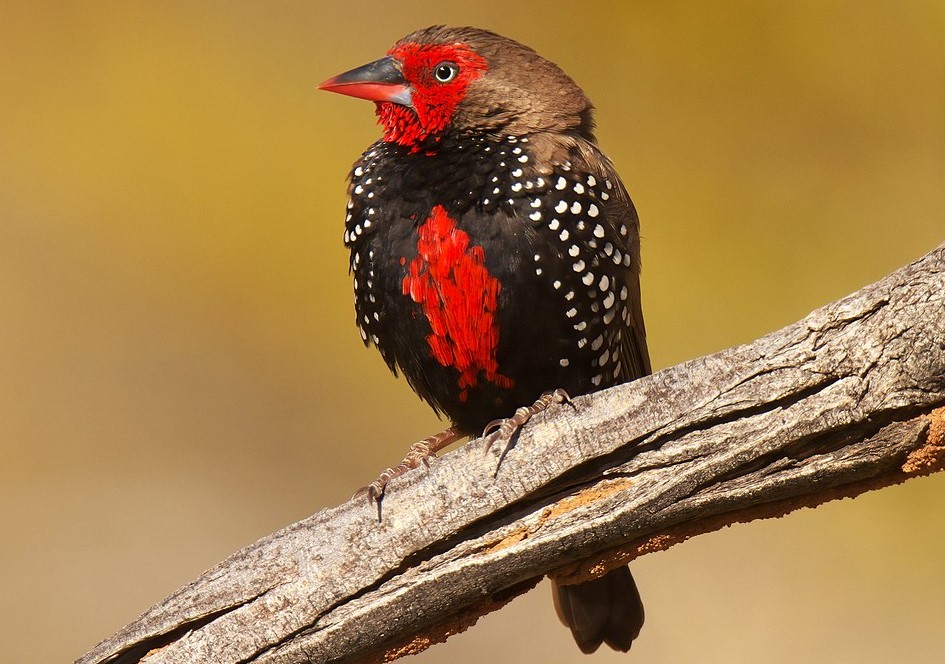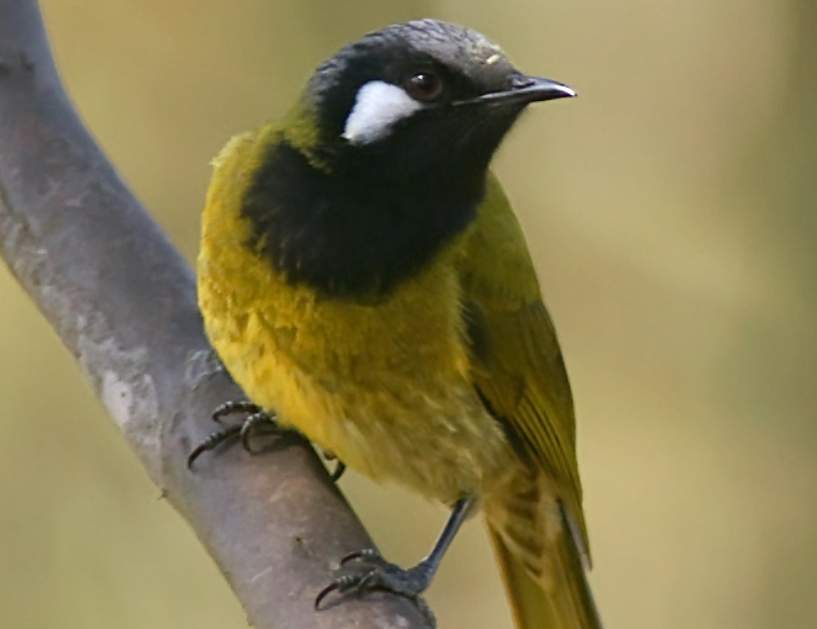Golden Bowerbird (Prionodura newtoniana) is one of the smallest of the bowerbirds and builds the biggest bower for its nuptial displays. Occurring only in the montane, mist draped rainforests of northeastern Queensland above 900 meters, it is Australia’s representative of a group of maypole-building bowerbirds found in the mountains of New Guinea.
The Golden Bowerbird, however, builds not one but two towers of sticks. It is maybe the sort of structure from which both maypole and avenue bowers-as built by Satin and Spotted Bowerbird groups have sprung in the course of evolution. On a sloping hillside, the male builds twin towers around two saplings about a meter apart.
These are bridged by a low branch or buttress which he displays to females. The towers are one-three meters high, and usually unequal; the twigs that form them are glued with saliva and adorned with moss, grey-green lichens, green and white flowers, and fruit. The birds live in loose clans, with as many as 10-15 in 40-50 hectares.
Each is the property of a single nuptially plumaged male or more than a few uncolored males that come and go. Holding them year after year, adult males defend their bowers and tend them through most months, continually refurbishing and adding to the structure.
During breeding, males spend much of the day perching watchfully in trees over the bower, giving alternating pulsating buzzes and churrs which most likely serve to identify themselves and ownership. Like most bowerbirds, they are polygynous and mate with itinerant females.
To attract females a male displays his bower in glittering performances that highlight his glistening yellow plumage, unique among bowerbirds. On the display perch, he hops from side to side, jerking his head, flaring his short crest, and sometimes fanning his tail, breaking the routine by suddenly hanging and flapping his wings.
At other times he hovers about the bower, body suspended vertically and tail opening and shutting to flash its brilliant margins. Copulation may take place in the bower. After it the female leaves to build her nest unaided well far away from the bower, and incubates and rears her young alone. In the montane rainforests of northern Queensland, Golden Bowerbirds are sedentary, even females and immature which from time to time drift temporarily to lower altitudes in winter.
They are rather solitary birds and feed actively from the upper forest strata to the floor on a variety of fruits and occasional insects. This bird is also known as Golden Gardener, Newton’s Bowerbird.
The size of the Golden Bowerbird is about 230-250 mm in length; males larger. MALE: Head, chin, back, and wings yellowish olive-brown, with short glistening yellow crest and patch on the mantle; flight feathers duskier. The tail is long and forked, with central tail feathers dusky olive, three outermost pairs orange-yellow.
Underparts are rich golden to orange-yellow with an opalescent sheen. The eye is yellow-white. Bill is olive-brown with a pale under the base. Feet black. FEMALE: Head, upperparts, wings, and tail dull olive-brown; underparts ash-gray with faint throat and breast streaks. IMMATURES: Like female but eye deep brown. Immature males don adult plumage starting gradually on the back; mature in three years.
Golden Bowerbird breeding male call is uttered soft, far-carrying wheezing croaks, churrings, and mechanical chatterings throughout the day; also mimics. Female utters similar sounds; less animated. Otherwise the silent or harsh rasp when feeding.
They breed in September-January, to the beginning of the monsoonal wet season. Nest a compact, rather deep, coarsely constructed cup of dry leaves, twigs, and strips of bark, bound with rootlets and vine tendrils; lined with finer leaves, rootlets, and twigs; placed in a tree hole or tree fork 1-3 m above ground, distant from bower, in the deep forest.
Nest 160 mm across, 110 mm deep, with cup 90 x 60 mm. Eggs: usually two, sometimes one; somewhat lustrous, cream; oval, about 36×25 mm. Incubation by female bird. Golden Bowerbird found in mountain rainforests above 900 m from near Cook town to Paluma Ranges, north of Townsville, Queensland.
Related Reading – Flame Bowerbird
